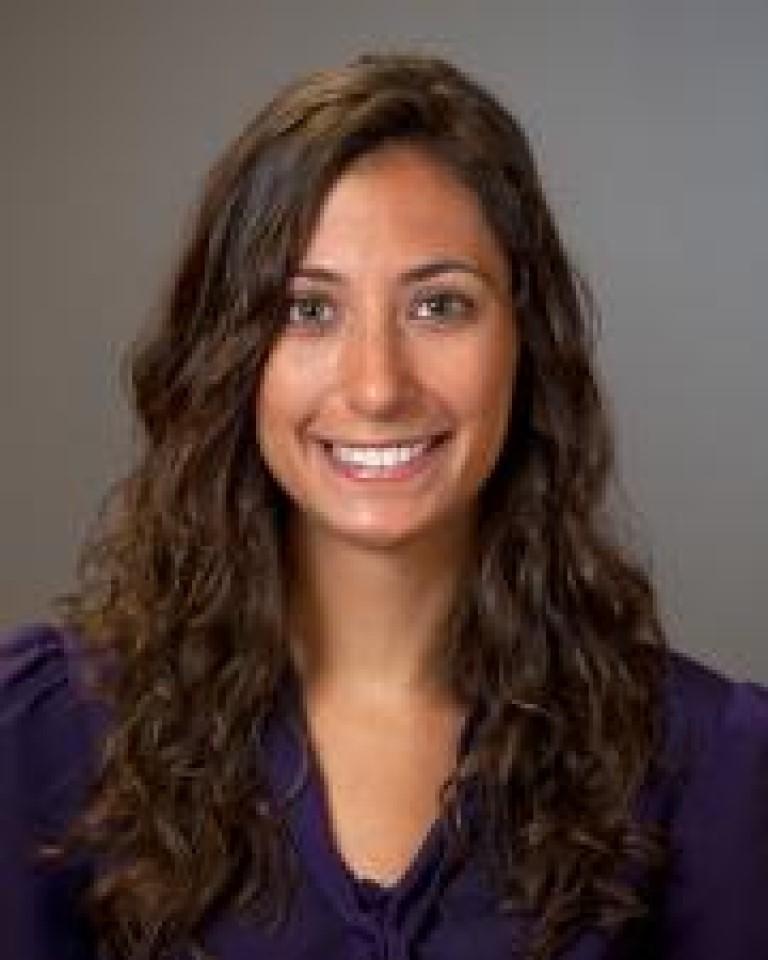Elaina Sutley

MENTOR SPOTLIGHT | NOVEMBER 2017
Department: Civil, Environmental, and Architectural Engineering
Describe your work in a few sentences that we can all understand: My research falls under two sets of umbrellas: hazards and disasters research for resilience and sustainability. My structural engineering expertise is on design and retrofit of wood buildings subjected to extreme event loading, like earthquakes, hurricanes, and tornados. My work has since become very interdisciplinary with sociology, urban planning, and public policy, and focuses on post-disaster housing recovery from a holistic perspective. In order for housing, and housing recovery, to be resilient it has to be sustainable, and vice versa.
Q: How did you first get interested in doing research?
A: I was working on my B.S. degree, when one of my professors told the class about some of his on-going research. It was fascinating! Way more fascinating than anything I had learned about through my coursework. I spoke to him that day to learn how I could get involved. Ultimately, he ended up hiring me as a graduate research assistant, and funded my Master’s degree.
Q: What do students in your discipline learn by doing research that they wouldn’t learn by just taking classes?
A: This is a BIG question. Undergraduate coursework touches the surface of how to model loads (loads like self-weight, wind, and earthquakes) on structures (such as buildings and bridges), and provides a few courses on how to design different components (like walls or connections) in different types of structures (made of wood or steel, for example) to resist those loads. Often, the coursework stops there. By doing research, students gain an understanding of system-level behavior for structures, how to model uncertainty, how to build complex numerical models of our structures, and how to perform complex analysis of those structures. Furthermore, students can gain a holistic understanding of disasters, including advanced load modeling and building behavior, but also how building damage impacts the building occupants, and the community, and how we can use that information to promote a faster and more equitable recovery from future disasters.
Q: What do you find to be the most exciting part of doing research or creative work? What makes this line of work meaningful and interesting to you?
A: In many ways, it is the amazing and diverse group of scholars that I get to collaborate with that make this research so exciting and enjoyable. These collaborations extend across Universities in the United States, and in other countries, because natural hazards and disasters are a problem everywhere. I work with other structural engineers, geotechnical engineers, computer scientists, urban planners, public policy and public health scholars, and sociologists. I love the diversity in expertise; it keeps me in a constant state of learning. We are in a turbulent time right now. The U.S. is experiencing billion-dollar disasters at an increasing rate. Every time I turn on the news, every time tornado season rolls around, every time wildfire season rolls around, and every time hurricane season rolls around, I am reminded of what makes this line of research so meaningful and important. As an example, my dissertation research investigated seismic retrofit designs for soft-story wood-frame buildings that are at-risk of collapse during moderate sized earthquakes. The findings from that work were immediately used in San Francisco and Los Angeles, California because of a new policy that mandates the seismic retrofit of these building types (over 15,000 buildings between those two cities). If retrofitted before the next big earthquake, that could be 15,000 buildings that do not collapse! And my research (and the work of many others) was able to directly contribute to that increased safety.
Q: What advice do you have for undergraduates interested in doing research in your field?
A: Do it! Hazards and disasters research is SUCH an amazing area to be in. Researchers in this field are filled with passion because we really believe we can make a difference in how communities and people are impacted by disasters. This research area is multi-disciplinary, so no matter what your background, there is a place for you! Come talk to me, talk to one of your professors, or get online and look up what is going on in the U.S. (or the world) with respect to disasters to learn how you can get involved.
Q: For many students, doing research or a larger creative project is the first time they have done work that routinely involves setbacks and the need to troubleshoot problems. Can you tell us about a time that your research didn’t go as expected? Or about any tricks or habits that you’ve developed to help you stay resilient in the face of obstacles?
A: Too many stories to tell here! I honestly face setbacks every single day. But this is one of my favorite things about the research process: the challenge. Research builds your critical thinking skills, and gives you the opportunity to do something no one has ever done before. But it is exactly this that makes research so challenging. If someone had already done it, I would have the answers, and you wouldn’t need to do it. What an amazing opportunity to create new space in the world’s existing understanding! This mindset is my biggest “trick” - staying resilient and optimistic in my thinking, and seeing challenges as opportunities.
Q: How do you spend your time outside of work?
A: During the warm-weather months, you can find me on Clinton Lake most weekends. Some of my favorite past-times are boating and water sports: skiing, wakeboarding, and swimming. During the cold-weather months, I try to sneak off to the mountains as much as possible because I equally love snow skiing and snowshoeing. Otherwise, I play the piano, love to cook and explore new recipes, and exercising.